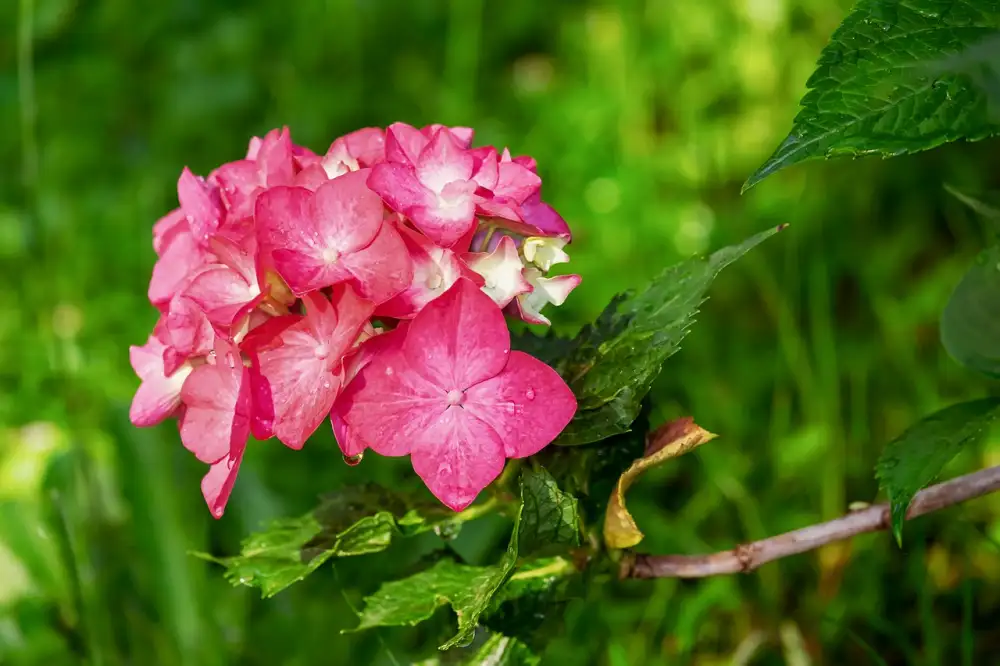Mastering Hydrangea Care: Essential Tips for Thriving Blooms in Your Home

Hydrangeas are beautiful flowering plants that can add a touch of elegance and color to any garden or home. However, caring for hydrangeas requires some knowledge and attention to detail. In this article, we will guide you through the essential tips for mastering hydrangea care, so you can enjoy thriving blooms all year round. From choosing the right location to understanding watering needs, fertilizing, pruning, and protecting against pests and diseases, we will cover everything you need to know to ensure your hydrangeas flourish. So let's dive in and discover the secrets to mastering hydrangea care!
Choosing the Right Location for Hydrangeas
Choosing the right location for your hydrangeas is crucial for their overall health and blooming. Hydrangeas thrive in well-drained soil with plenty of sunlight, ideally receiving at least 4-6 hours of direct sunlight each day. However, they also benefit from some shade during the hottest part of the day to prevent wilting. It's important to avoid planting them in areas that are prone to strong winds, as this can damage their delicate blooms. Additionally, consider the size of the mature plant when choosing a location to ensure it has enough space to grow and spread its branches.
Understanding Hydrangea Watering Needs
Proper watering is crucial for the health and vitality of your hydrangeas. These beautiful plants require consistent moisture, but overwatering can be just as detrimental as underwatering. The key is to find the right balance.
Hydrangeas thrive in well-drained soil that retains moisture without becoming waterlogged. Before watering, check the soil with your finger. If it feels dry about an inch below the surface, it's time to water. On hot summer days, hydrangeas may need watering every day or every other day.
When watering, aim for a slow and deep soak rather than a quick sprinkle. This allows the water to penetrate deeply into the root system. Avoid wetting the leaves as this can lead to disease and fungal issues.
During periods of heavy rainfall, you may need to adjust your watering schedule accordingly. It's important not to let your hydrangeas sit in standing water for extended periods as this can cause root rot.
Remember that different hydrangea varieties have different water requirements. For example, mophead hydrangeas prefer more moisture compared to lacecap hydrangeas. Be sure to research the specific needs of your chosen variety and adjust your watering routine accordingly.
By understanding and meeting their watering needs, you'll ensure that your hydrangeas stay healthy and produce stunning blooms year after year.
Fertilizing Hydrangeas for Optimal Growth
Proper fertilization is essential for the healthy growth and vibrant blooms of hydrangeas. Start by selecting a balanced, slow-release fertilizer with equal amounts of nitrogen, phosphorus, and potassium. Apply the fertilizer in early spring, just as new growth begins.
Avoid over-fertilizing, as it can lead to excessive foliage growth at the expense of blooms. Follow the package instructions carefully to determine the appropriate amount for your specific hydrangea variety.
For blue hydrangeas, add aluminum sulfate or sulfur to acidify the soil and enhance their color. For pink or red varieties, use lime to increase soil alkalinity.
Remember to water your hydrangeas thoroughly after fertilizing to ensure proper nutrient absorption. Regular fertilization will promote strong root development and encourage abundant flowering throughout the growing season.
Pruning Hydrangeas to Promote Health and Blooming
Pruning hydrangeas is essential for maintaining their health and promoting abundant blooms. The timing and technique of pruning may vary depending on the type of hydrangea you have. For most hydrangeas, it is best to prune them in late winter or early spring before new growth begins. Start by removing any dead or damaged wood, cutting it back to healthy tissue. Next, thin out crowded branches to improve air circulation and sunlight penetration. To encourage more blooms, selectively prune older stems by cutting them back to a pair of healthy buds. Avoid pruning too much at once as this can reduce flowering. Regular pruning will help your hydrangeas maintain a compact shape and produce vibrant blossoms year after year.
Protecting Hydrangeas from Pests and Diseases
Hydrangeas are susceptible to a variety of pests and diseases, which can hinder their growth and blooming. To protect your hydrangeas, it is important to be proactive in preventing and treating these issues.
One common pest that affects hydrangeas is aphids. These small insects feed on the sap of the plant, causing stunted growth and distorted leaves. To control aphids, you can use insecticidal soap or a strong stream of water to wash them off the plant.
Another common pest is the hydrangea scale. These tiny insects attach themselves to the stems and leaves of the plant, sucking out its juices. To get rid of scales, you can scrape them off with a soft brush or use horticultural oil.
Fungal diseases such as powdery mildew and botrytis blight can also affect hydrangeas. Powdery mildew appears as a white powdery coating on the leaves, while botrytis blight causes brown spots and wilting. To prevent these diseases, make sure your hydrangeas have good air circulation by spacing them properly and avoiding overhead watering.
If you notice any signs of pests or diseases on your hydrangeas, it is important to take action immediately. Regularly inspect your plants for any abnormalities and treat them accordingly. By protecting your hydrangeas from pests and diseases, you can ensure they thrive and produce beautiful blooms in your home garden.
Tips for Overwintering Hydrangeas
1. Mulch: Before winter arrives, apply a thick layer of mulch around the base of your hydrangeas. This will help insulate the roots and protect them from freezing temperatures.
2. Wrap in Burlap: For extra protection, consider wrapping your hydrangeas in burlap. This will shield them from harsh winds and prevent winter burn.
3. Watering: During the winter months, it's important to keep your hydrangeas hydrated. Give them a deep watering before the ground freezes to ensure they have enough moisture to sustain them through the cold season.
4. Pruning: Avoid pruning your hydrangeas in late fall or early winter. Instead, wait until spring when new growth begins to appear. This will help protect the plant from frost damage.
5. Sheltered Location: If possible, choose a sheltered location for your hydrangeas during the winter months. This can be against a wall or near other plants that provide some protection from harsh weather conditions.
By following these tips, you can ensure that your hydrangeas survive the winter and come back strong and beautiful in the springtime.
Troubleshooting Common Hydrangea Care Issues
1. Wilting Leaves: If your hydrangea leaves are wilting, it may be a sign of underwatering or root rot. Check the soil moisture and adjust watering accordingly. Ensure proper drainage to prevent root rot.
2. Leaf Spots: Leaf spots can be caused by fungal diseases such as powdery mildew or leaf spot fungus. Remove infected leaves and treat with a fungicide if necessary.
3. No Blooms: Lack of blooms can be due to improper pruning or incorrect fertilization. Prune at the right time and use a balanced fertilizer specifically formulated for hydrangeas.
4. Changing Flower Color: Hydrangeas can change flower color based on soil pH. Blue flowers indicate acidic soil, while pink flowers indicate alkaline soil. Adjust the pH using additives like aluminum sulfate or lime to achieve desired colors.
5. Stunted Growth: Stunted growth may result from poor soil quality or inadequate sunlight. Ensure your hydrangeas receive enough nutrients and sunlight for optimal growth.
Remember, troubleshooting common issues is essential in mastering hydrangea care and ensuring beautiful blooms in your home garden.
In conclusion, mastering hydrangea care is essential for achieving beautiful blooms in your home. By choosing the right location, providing adequate watering, fertilizing properly, pruning regularly, and protecting against pests and diseases, you can ensure that your hydrangeas thrive and produce stunning flowers. Additionally, learning how to overwinter your hydrangeas and troubleshooting common care issues will help maintain their health and vitality. With these tips in mind, you can confidently embark on your journey to culinary excellence with hydrangeas as a centerpiece of beauty in your home.
Published: 07. 01. 2024
Category: Home



